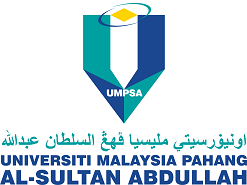Implementation of Carbon Dioxide Gas Injection Method for Gas Recovery at Rashidpur Gas Field, Bangladesh
DOI:
https://doi.org/10.15282/ijets.5.2016.1.7.1046Keywords:
Rashidpur gas field, enhanced gas recovery, carbon dioxide gas injection, trillion cubic feetAbstract
Natural gas plays an important role for the economic development of Bangladesh. It is the primary options to satisfy the environmentally clean energy, whereas coal is a dirty energy source and oil creates an unhealthy environment. Bangladesh is the seventh-largest producer of natural gas in Asia. Gas supplies meet 56% of domestic energy demand. The proven natural gas reserve in Bangladesh is only 19.73 Tcf. The Rashidpur Gas Field (RGF) is located in the Sylhet Basin, Northeast Bangladesh. It is 35 km long and 7 km anticlinal structure and asymmetric in nature with steeper eastern flank (22˚ to 25˚) and gentler western flank (8˚ to 12˚). There are two gas zones in depth between 1380m to 2787m below surface. Sandstone reservoirs of Miocene-Pliocene age and are considered to have been originated shallow marine depositional environment. The reservoir porosity-permeability values are very good, with estimated gas initially in place (GIIP) of the RGF was 2.242 Tcf with 58% recovery, thus recording an initial gas reserve is 1.309 Tcf. Five gas producing wells (RP-1, 3, 4, 6 and 7) in the RGF are producing 50 MMscf gas per day. Due to the demand of natural gas with decreasing production rate, this enhanced natural gas plays a vital role in the national economy of the country. This research depicts the development of the daily production of the RGF from 50 MMscfd to 99 MMscfd using software from the existing production wells. Thus the natural gas in the RGF would be enhanced/recovered using carbon dioxide (CO2) gas injection by Enhanced Gas Recovery (EGR) method from the RGF reservoir. Applying this method would play a vital role to increase the daily production rate of the RGF.


